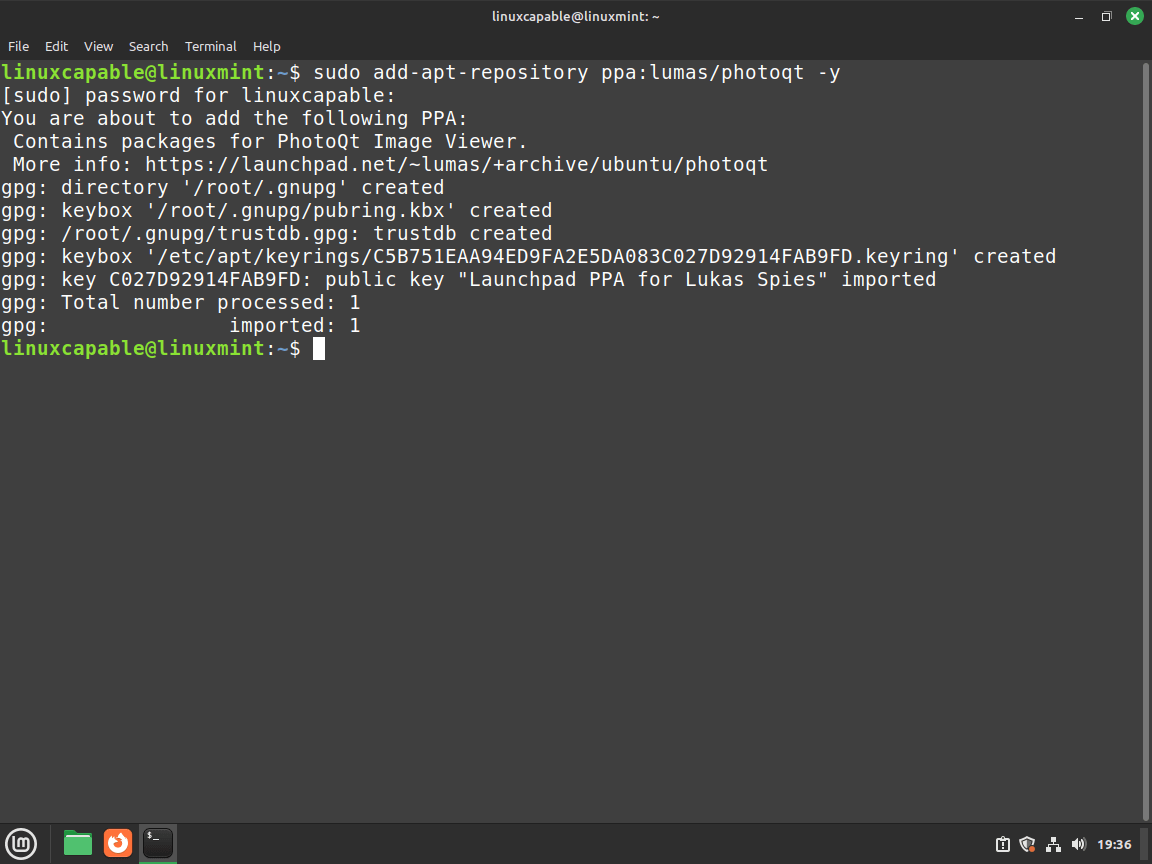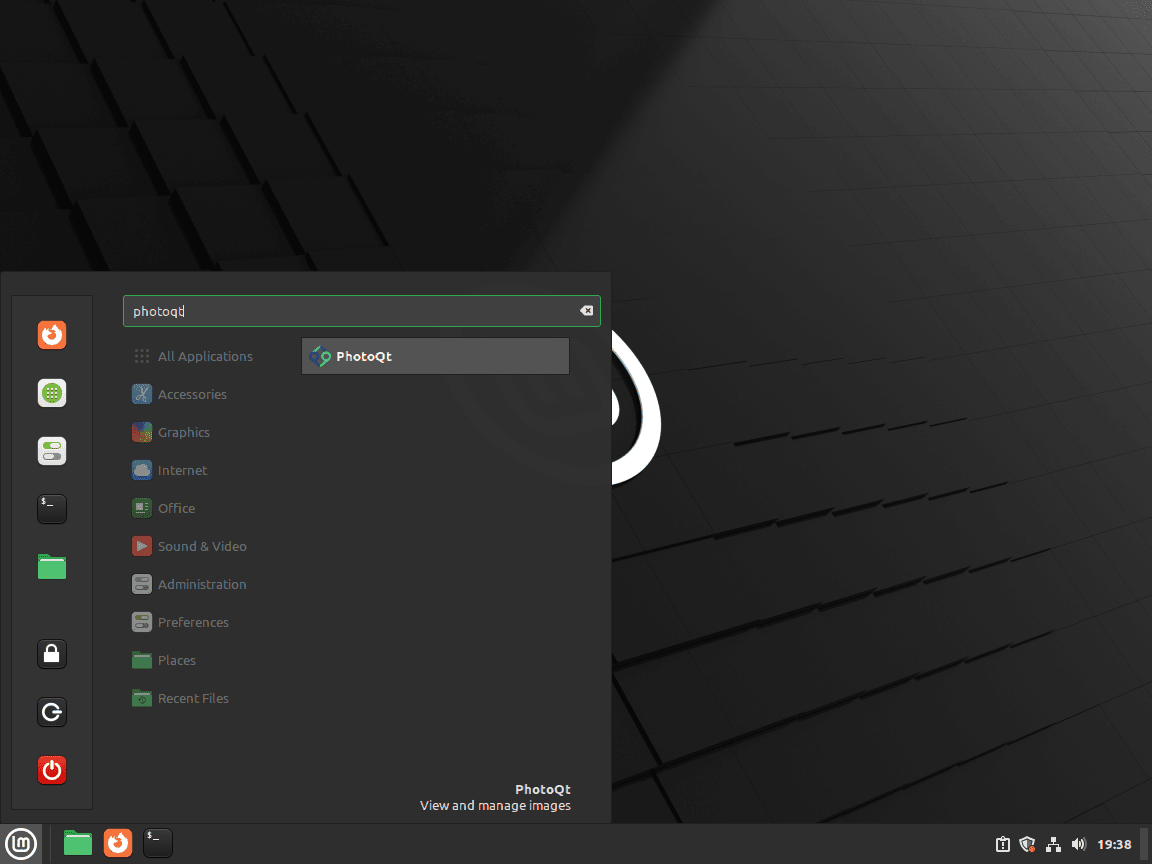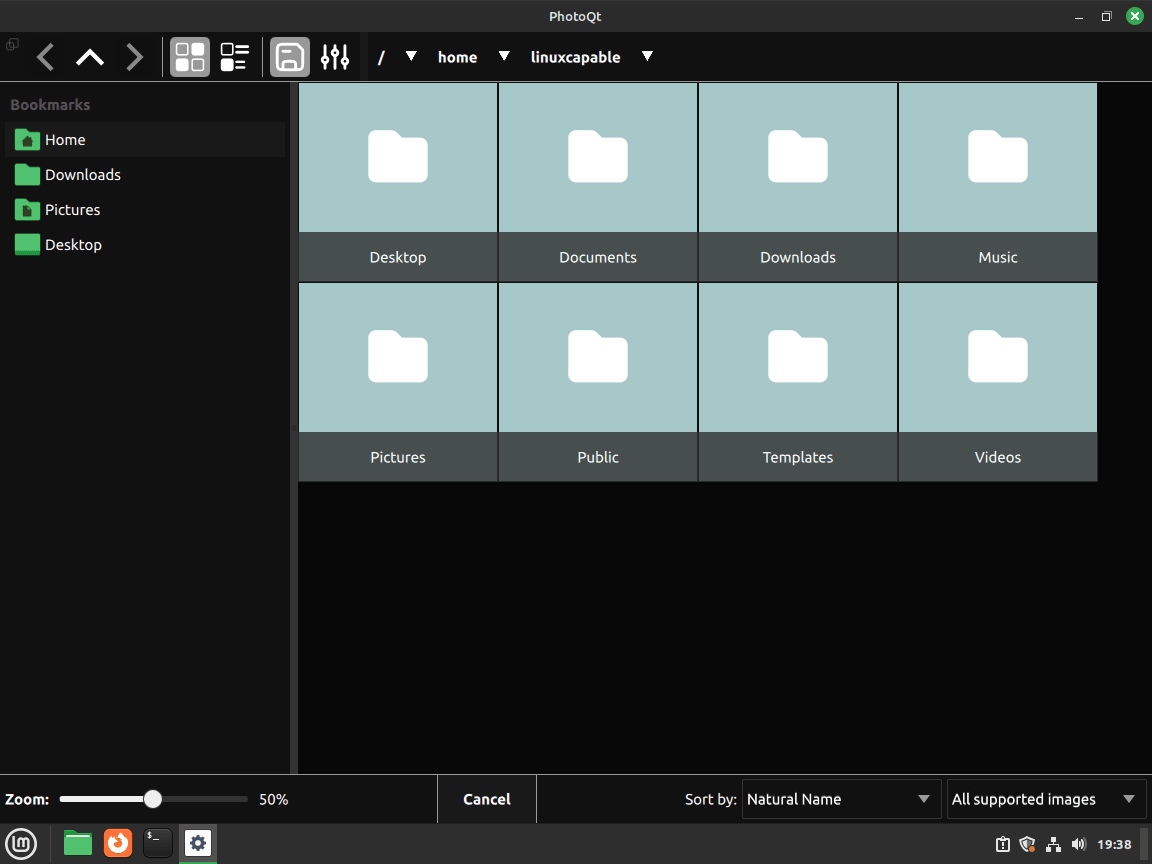PhotoQt is a versatile and powerful image viewer for Linux that combines speed with a user-friendly interface. It supports various image formats and provides a seamless viewing experience with various customization options. Key features include a highly customizable interface, fast image loading, support for numerous image formats, and advanced functionalities such as zooming, rotating, and full-screen viewing modes. PhotoQt is ideal for photographers and casual users who need a reliable tool for viewing and managing images.
To install PhotoQt on Linux Mint 22, 21, or 20, you have multiple installation options. These include using the default APT repository provided by Linux Mint, the PPA maintained by Lukas Spies for access to the latest stable builds, or Flatpak with the Flathub repository. Each method offers a reliable way to get PhotoQt up and running on your system.
Method 1: Install PhotoQT via APT
To install PhotoQT on Linux Mint, we’ll use APT (Advanced Package Tool), the default package manager for this operating system. This section covers the necessary steps to update your system and select the most appropriate installation method.
Update Your Linux Mint System Before Installing PhotoQT
Updating your Linux Mint system is a crucial first step. It prevents conflicts with outdated packages and ensures your system has the latest security patches.
Execute the following commands to update and upgrade your system:
sudo apt update
sudo apt upgradeThe sudo apt update command refreshes package information from all configured sources, while the sudo apt upgrade brings all installed packages to their latest versions.
Select APT Installation Option for PhotoQT
With your system updated, you can choose one of two methods to install PhotoQT using APT:
Option 1: Install PhotoQT Using Linux Mint’s APT Repository
For stability, it is recommended that you install PhotoQT from Linux Mint’s default repository. This method might not offer the latest features but minimizes compatibility issues. The repository contains software versions extensively tested with Linux Mint.
Run this command to install PhotoQT from the default repository:
sudo apt install photoqtOption 2: Install PhotoQT via LaunchPAD PPA
For a more updated version of PhotoQT, consider using a Personal Package Archive (PPA) maintained by Lukas Spies. First, add the PPA to your system’s software sources:
sudo add-apt-repository ppa:lumas/photoqt -yThis command enables APT to fetch packages from this newly added source.

After adding the PPA, update your package list:
sudo apt updateNow, install PhotoQT from the PPA with this command:
sudo apt install photoqtThis installs the latest version of PhotoQT available in the PPA.
If you previously installed PhotoQT from the APT repository and wish to upgrade, re-run the installation command to align your packages correctly.
Method 2: Install PhotoQt via Flatpak and Flathub
Using Flatpak and Flathub offers an alternative and increasingly popular method to install PhotoQt on Linux Mint. Flatpak, akin to Snap, is a universal package management system that isolates software in a sandbox environment, enhancing security. This method is beneficial for accessing applications unavailable in your distribution’s standard repositories.
Enable Flathub Repository for PhotoQT
First, it is essential to enable the Flathub repository, which is a primary hub for Flatpak applications. Flathub hosts a wide range of applications packaged in Flatpak format, facilitating easy installation.
Run this command to add Flathub to your Flatpak configuration:
sudo flatpak remote-add --if-not-exists flathub https://flathub.org/repo/flathub.flatpakrepoThis command directs Flatpak to incorporate the Flathub repository into your system, providing access to a broad spectrum of applications, including PhotoQt.
Install PhotoQt via Flatpak Command
With Flathub integrated, you can proceed to install PhotoQt via Flatpak. The flatpak install command fetches and installs the application from Flathub.
To install PhotoQt, execute:
flatpak install flathub org.photoqt.PhotoQt -yThis command ensures the installation of the latest version of PhotoQt from the Flathub repository onto your Linux Mint system.
Launching PhotoQt on Linux Mint
After installing PhotoQt on Linux Mint, the next step is to launch the application and explore its features. There are multiple ways to start PhotoQt, either through the command line or using the graphical user interface (GUI).
Launch PhotoQt from the Terminal
For users proficient in using the command line, opening PhotoQt is straightforward. Execute the following command to start PhotoQt:
photoqtThis command instructs your system to initiate the PhotoQt application.
If you installed PhotoQt via Flatpak, the command differs slightly. Use this command to launch PhotoQt:
flatpak run org.photoqt.PhotoQtThis command prompts Flatpak to run the PhotoQt application from the installed packages.
Launch PhotoQt from the GUI
For users who prefer a graphical interface, launching PhotoQt is easy through the desktop environment. Linux Mint supports various desktop environments, such as Cinnamon, XFCE, KDE, and GNOME, each with a slightly different way of accessing installed applications.
- Cinnamon, XFCE, KDE:
- Click on the ‘Menu’ or ‘Application Launcher’.
- Search for ‘PhotoQt’ and click the application icon to launch it.
- GNOME:
- Click on ‘Activities’ at the top-left corner.
- Select ‘Show Applications’ at the bottom.
- Find and click on the ‘PhotoQt’ icon to open it.
These methods provide quick access to PhotoQt, allowing you to start using the application without needing to use the terminal.


Managing PhotoQT
Update PhotoQT
Regular updates are essential for maintaining the optimal performance of PhotoQT.
APT Update Command for PhotoQT
If you’ve installed PhotoQT using APT, update it with this command:
sudo apt update && sudo apt upgrade
This command updates PhotoQT and all other packages managed by APT. It’s good practice to run this regularly to keep your system updated.
Flatpak Update Command for PhotoQT
For PhotoQT installations via Flatpak, use this command to update:
flatpak updateThis ensures both PhotoQT and other Flatpak-installed applications are current.
Remove PhotoQT
If you need to uninstall PhotoQT, the process varies based on your installation method.
APT Remove Commands for PhotoQT
For removal of PhotoQT installed via APT, execute this command:
sudo apt remove photoqtIf you added a PPA for PhotoQT and wish to remove it, use this command:
sudo add-apt-repository --remove ppa:lumas/photoqt -yFlatpak Remove Command for PhotoQT
To uninstall PhotoQT installed through Flatpak, use:
flatpak uninstall --delete-data org.photoqt.PhotoQtThis command removes PhotoQT and deletes any associated data on your system.
Conclusion
With PhotoQt successfully installed on your Linux Mint system, you can now enjoy a high-performance image viewer with a customizable interface and robust features. Regularly check for updates to ensure you have the latest improvements and features. For any issues or further customization, refer to the PhotoQt documentation and community forums. Enjoy a superior image viewing experience with PhotoQt.

